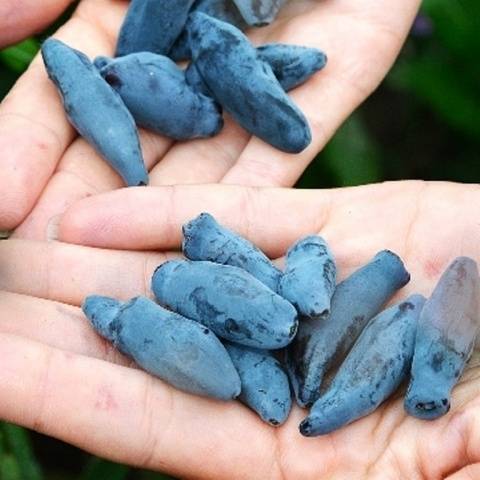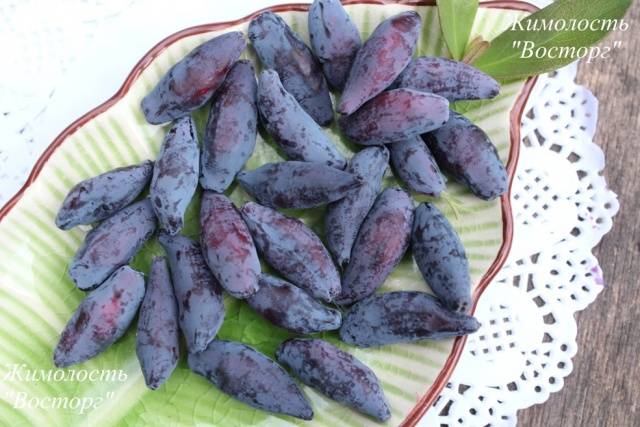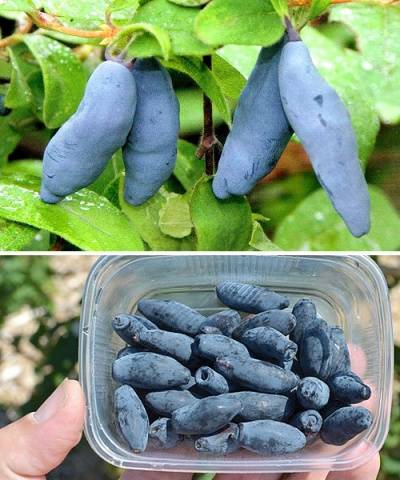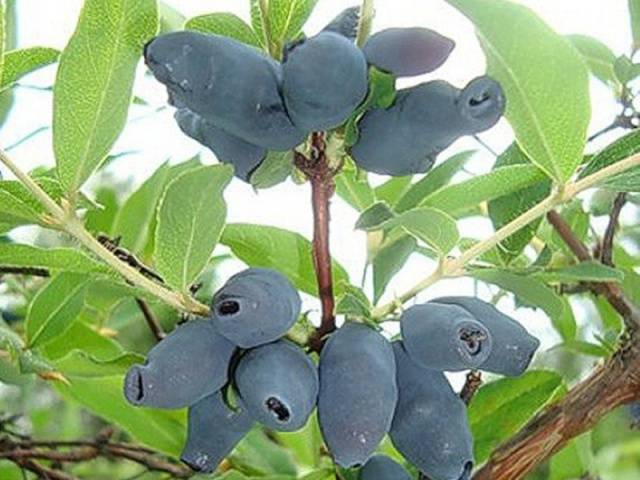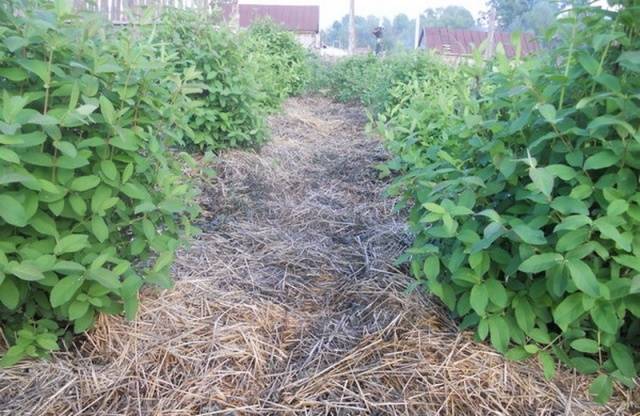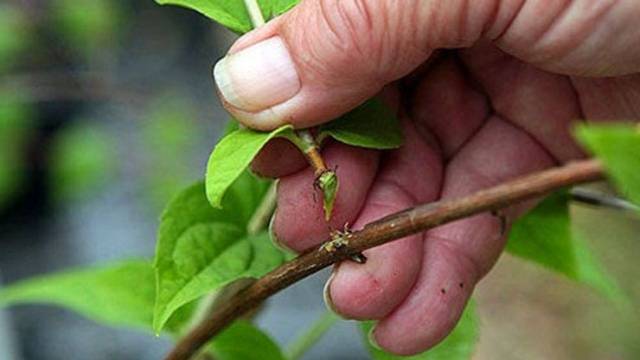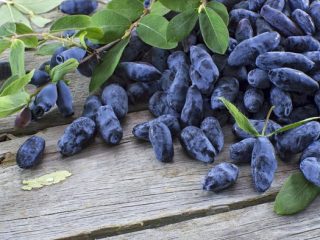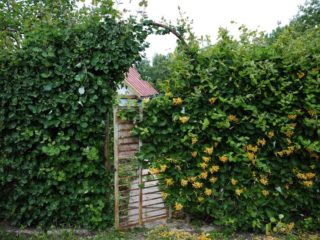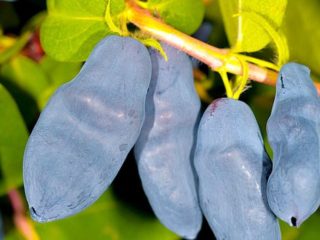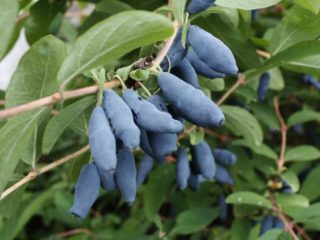Content
Honeysuckle Delight, which appeared on the market not so long ago, is popular among gardeners in many Russian regions. It retains the unique properties of the wild parent. The plant is hardy, winter-hardy, and unpretentious in care. The taste and beneficial qualities of the berry, like other varieties of honeysuckle, are excellent.
Breeding history
In the Tomsk region, the Bakcharskoye horticultural enterprise has been successfully operating for more than 80 years, breeding new varieties of fruit and berry crops. All plants have a high level of winter hardiness and excellent taste.
Currently, the company specializes in obtaining unique varieties of honeysuckle. Experimental plantations are located on an area of 50 hectares. Over the years of horticultural activity, many varieties and hybrid forms with attractive characteristics have appeared. Among them is the honeysuckle variety Delight, here it is in the photo below. Variety testing began in 2012.
Description and characteristics of the variety
The honeysuckle bush of the Delight variety, according to the description and reviews of gardeners, stands out among other crops with its strong growth and rounded shape.There are few skeletal branches, the crown is sparse and seems openwork thanks to the dark green leaves. Both the height and width of the plant are within 170 cm.
The fruits are deep purple with a thick waxy coating. The mass of spindle-shaped berries is about 2.6 g. Tasters rate the taste at 4.8 points. Edible honeysuckle berries of the Vostorg variety contain up to 8.9% sugar, so they taste sweet and sour, without bitterness. The fruits are somewhat reminiscent of blueberries and blueberries, fragrant with a pleasant aftertaste.
The fruit ripening period is the second ten days of June. Unlike other varieties and hybrids, the berries of honeysuckle hold on tighter and do not crumble as much. Fruits with thick skin are easy to transport and their presentation is not lost. The purpose of honeysuckle is universal. The berries are prepared into compotes, jam, ground with sugar or frozen fresh.
Pollinators
Almost all varieties of honeysuckle are self-fertile, meaning they require cross-pollination. Moreover, it is important to have other plant varieties. At least three honeysuckle bushes should be planted on the site for pollination at a distance of 1.5-2 meters.
Excellent pollinators of the Delight variety are:
- Yugana;
- The Giant's Daughter;
- Bakcharsky Giant;
- Silginka;
- Strezhevchanka.
Features of fruiting
Flowering and fruiting of honeysuckle begins early, at the age of three. In the first year, about 1.3 kg of dark purple fruits are collected from the bush. At the age of 6-15 years - maximum yield, up to 5.5 kg.
The berries begin to be picked in June, they ripen together, which facilitates the harvesting process. The shedding of fruits of the Vostorg variety, according to the description and reviews, is average. You need to start picking the fruit when the berries turn dark blue.
Advantages and disadvantages
To decide to grow any plant, in addition to the description, you need to know the positive and negative sides. The honeysuckle variety Delight has a lot of advantages that prevail over the disadvantages:
- early and friendly maturation;
- large fruit;
- a planted three-year-old bush is already producing its first harvest;
- high yield with minimal effort;
- winter hardiness, the ability to grow in many regions of Russia;
- berry shedding is minimal;
- ease of cleaning due to the shape of the crown;
- the berries are easily removed (it is best to shake them off on the litter);
- the separation is dry, so the fruits do not leak even during long-term transportation and storage;
- The Delight variety is resistant to many diseases and pests.
The disadvantage of honeysuckle Delight can be called partial shedding (only overripe berries) and damage to flowers and fruits from returning spring frosts. But there is no escape from this.
Secrets of growing
Hybrid honeysuckle Delight can be mastered even by novice gardeners, since growing it does not pose any particular difficulties. You just need to take into account some nuances.
Landing dates
Honeysuckle can be planted in the spring. Moreover, you need to start work before the buds open. Experienced gardeners prefer to propagate the Delight variety in autumn - from the end of September to the second half of October.
Selection of location and soil
Judging by the description and characteristics, honeysuckle Delight is an unpretentious berry bush. But it gives a good harvest:
- In areas that are illuminated and protected from winds.
- In areas where groundwater approaches the surface no higher than one meter.
- On neutral or slightly acidic soils.
- When the root system is in the shade and the crown is well lit by the sun.
Planting a bush
Honeysuckle has its own life cycles, which differ from other plants:
- Winter sleep ends in early spring, and leaves begin to bloom already at the root of March.
- The dormant state begins in the last days of July.
These features must be taken into account when planting honeysuckle. It is best to plant bushes from September to the end of October. In spring, plants will immediately begin their development and will be able to grow their root system and green mass. The distance between the bushes should be at least 150 cm. Honeysuckle grows well next to currants.
And now about the landing rules:
- The pit is prepared in advance, the depth and diameter is 40 cm or more (depending on the size of the root system).
- Drainage is placed at the bottom. These can be stones, plant branches, bark.
- Add compost (2 buckets), wood ash (1 liter jar) and 3 tablespoons of superphosphate (no more!) to the soil.
- The hole is filled with water, a mound is made in the center, on which a honeysuckle bush is planted, like on a chair. The roots are carefully straightened, soil is added and watered again to compact the soil and remove air pockets. After this, add a layer of mulch. The root collar should not be buried more than 5-6 cm!
- The branches are not shortened after planting so that the growth of the bush does not slow down.
Care
You can get an excellent harvest from any berry and fruit crops only with proper care.
Watering
The honeysuckle variety Delight is a lover of abundant watering.Lack of moisture negatively affects not only the taste characteristics of berries, but also leads to a decrease in their size and adds bitterness.
The bushes need to be watered throughout the growing season, because after the harvest is released, the plants begin to form next year’s harvest.
Top dressing
In the first two years, if the soil was well amended before planting, no special fertilizing is required. In the third year, organic fertilizers are applied to each bush. The Vostorg variety responds well to infusions of chicken manure, mullein, and fermented herbs.
Fertilizing is carried out in early spring, until the buds begin to swell, during flowering and in the fall after leaf fall. Honeysuckle, unlike many garden plants, loves wood ash. It must be added under the bushes during the formation of ovaries.
Trimming
Particular attention should be paid to pruning bushes. The fact is that fruit buds form on young shoots. They cannot be shortened.
Each adult bush of the Vostorg variety should have no more than 18 skeletal branches, the excess ones must be removed in September. As a rule, fruiting declines after 15 years, and at 20 years the plant is considered old.
Rejuvenating pruning gives the plant new strength to bear fruit. To do this, in the summer all growing shoots are cut off to stumps. Soon young branches will appear, on which the harvest will ripen next year.
Protection from diseases and pests
The honeysuckle variety Delight, although resistant to fungal diseases, can suffer from:
- reddish-olive spotting;
- powdery mildew;
- tuberculiosis.
You shouldn’t wait for the disease to spread; it’s better to prevent it. For prevention, honeysuckle Delight is treated with Bordeaux mixture or the drug Skor.
Insects and birds love to eat the fruits. Most often honeysuckle is attacked by:
- aphid;
- leaf roller and honeysuckle caterpillars;
- willow scale insect.
For treatment, chemicals or Fitosporin are used. Infusion of wormwood and garlic helps well in pest control. These biological agents should be used to spray honeysuckle bushes of the Delight variety. Planting calendula and marigolds saves plants from pests and diseases.
Reproduction
The seed method of propagating honeysuckle Delight, like other varieties of this crop, is not welcomed by gardeners. The fact is that varietal qualities are not preserved. But by dividing the bush, layering or green cuttings, you can successfully obtain new seedlings at home:
- You can divide a honeysuckle bush that is at least eight years old. A part of the bush with three skeletal branches and a root at least 20 cm long is cut down with an ax and immediately planted in a permanent place.
- Even a novice gardener can cope with propagation by layering of the Delight variety. You need to bend the shoot of the first year to the ground and cover it with earth. A year later, the small bush is transplanted to a new location.
- Lignified cuttings from Honeysuckle Delight (at least 17 cm) are cut at the end of March and immediately planted in a nursery at an angle. 2 buds are left above the surface of the earth. In a month the plants will begin to grow.
- Honeysuckle is propagated by green cuttings after flowering, at the end of June. They choose a green twig and tear it off with the heel. Then the cuttings are buried 5 cm into fertile soil in the nursery.
Conclusion
Honeysuckle berries of the Vostorg variety are rightly called the fruits of youth. They contain a substance that improves cardiac activity and cleanses blood vessels. Berries are useful not only for children, but also for adults.
Many dishes are prepared from the fruits, but honeysuckle, ground with sugar, is considered the most valuable.
